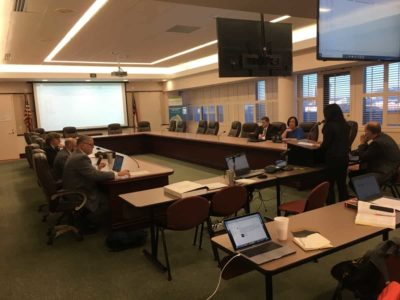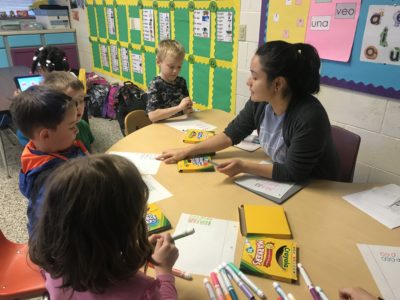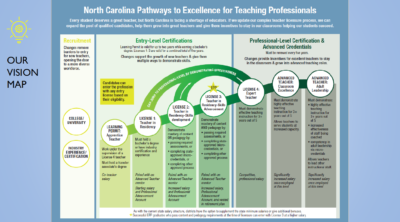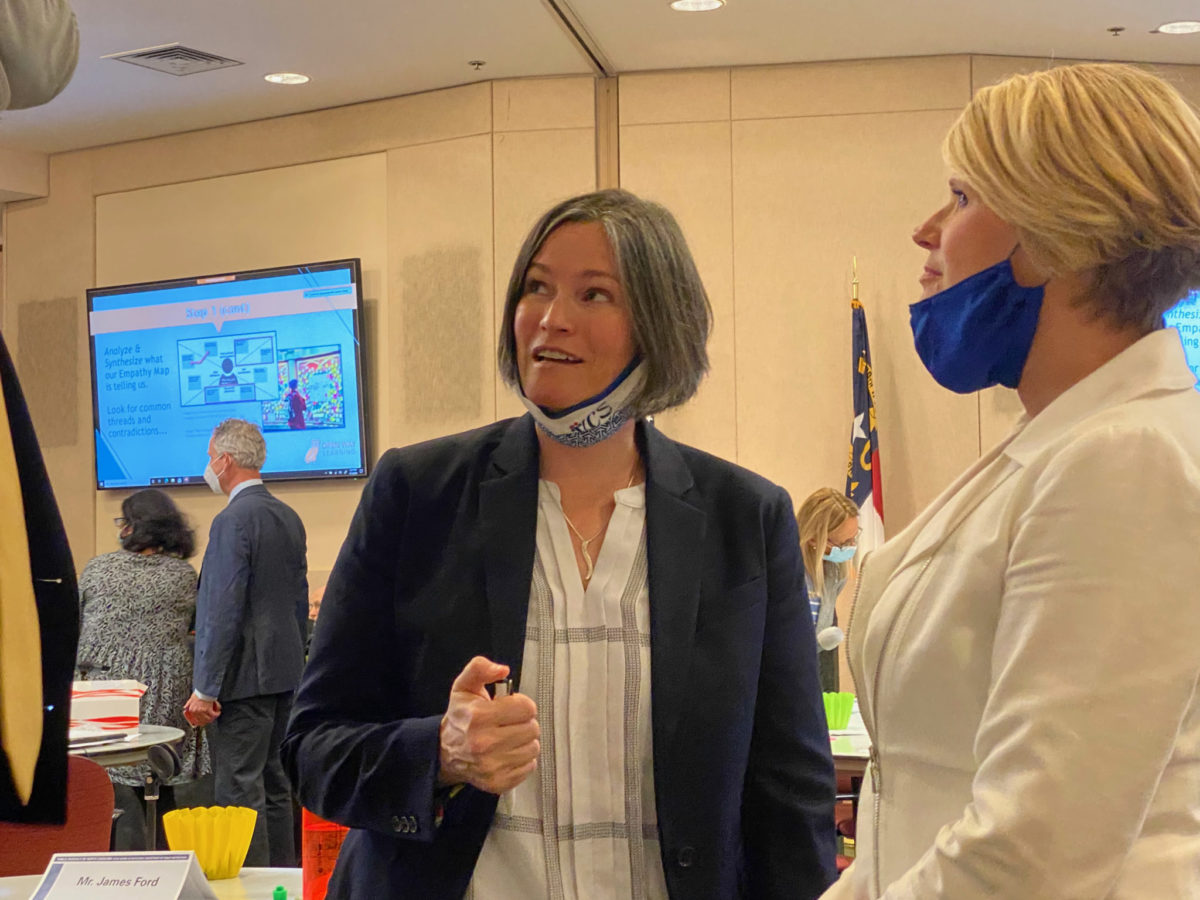
Share this story
- A subcommittee of the commission considering a new licensure system reacted to teacher feedback about the plan during a meeting Friday. Find out what they said and what might change.
- “Their concerns were vast, and still we left every meeting with people with still major questions," @twinologist said of teacher reactions to a new teacher licensure plan during a recent meeting.
Members of a subcommittee working on a new licensure system got a chance to address concerns during the first meeting since educator feedback was unveiled.
The Advancement and Development Subcommittee of the Professional Educator Preparation and Standards Commission (PEPSC) met Friday. The commission is working on a new teacher licensure system that has been controversial among educators, but the subcommittees must first iron out the details. Just last week, co-chairs of the various subcommittees heard teacher feedback collected by Julie Pittman, a special adviser on teacher engagement for Superintendent of Public Instruction Catherine Truitt.
“Their concerns were vast, and still we left every meeting with people with still major questions,” Pittman said during her presentation last week.
You can hear a recording of that presentation here. You can see Pittman’s presentation here.
The potential licensure plan could mean dramatic increases in teacher compensation and a higher starting pay for education school graduates. The plan contains multiple levels at which educators can teach, beginning at apprentice and progressing to expert and advanced teaching roles that come with additional responsibility and compensation well in excess of what the state pays today.
Below is the chart currently being used to lay out what the new plan might look like.
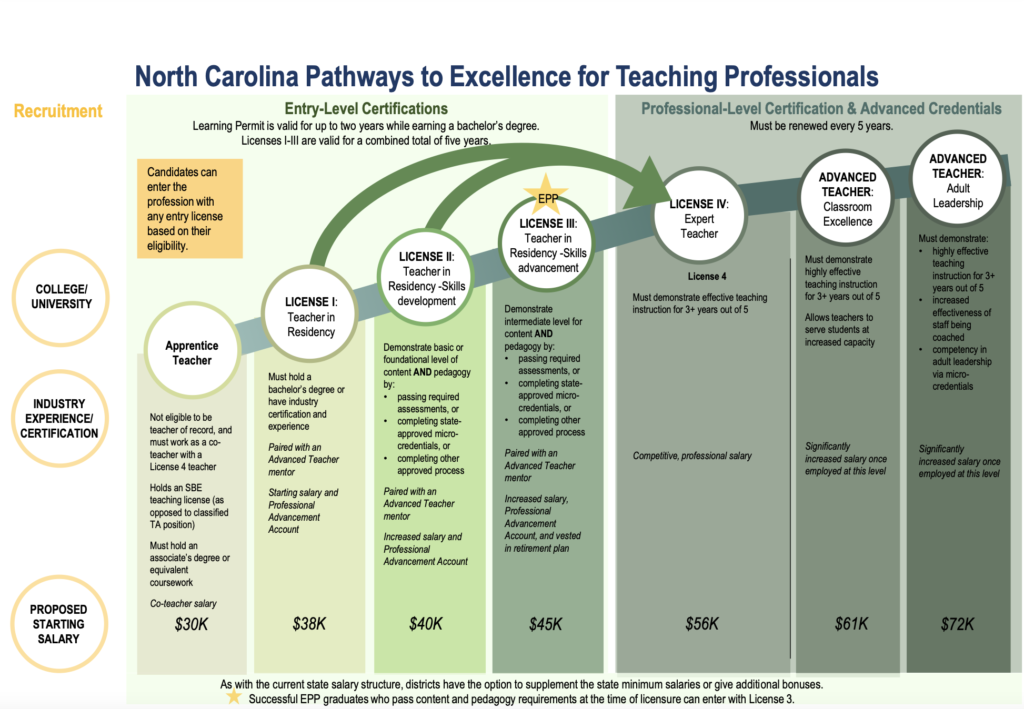
In conversations with teachers around the state, Pittman and Maureen Stover, 2020 North Carolina teacher of the year and co-chair of the subcommittee that met on Friday, heard the numerous concerns expressed by educators about the new plan. Those included worries about compensation being tied to the Education Value-Added Assessment System (EVAAS). Other teachers expressed concern about whether current types of pay tied to having a Master’s degree or National Board Certification would be affected.
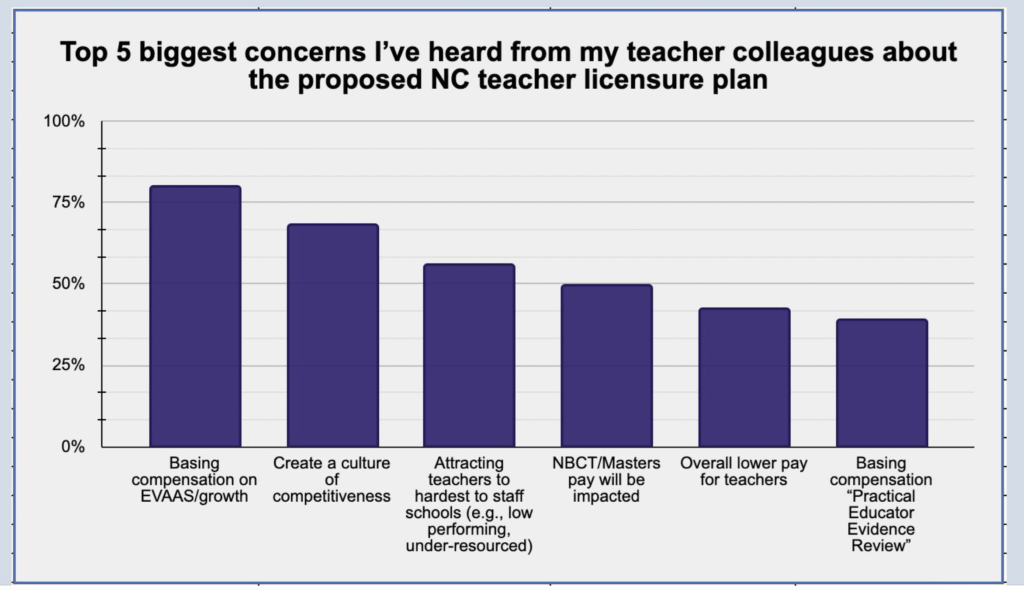
Pittman said that some of the biggest questions from teachers pertained to why the reform was necessary and why now was the time to do it given how difficult the past few years under COVID-19 have been. She also discussed using a new infographic that might be a less-complicated way to illustrate the new licensure plan.
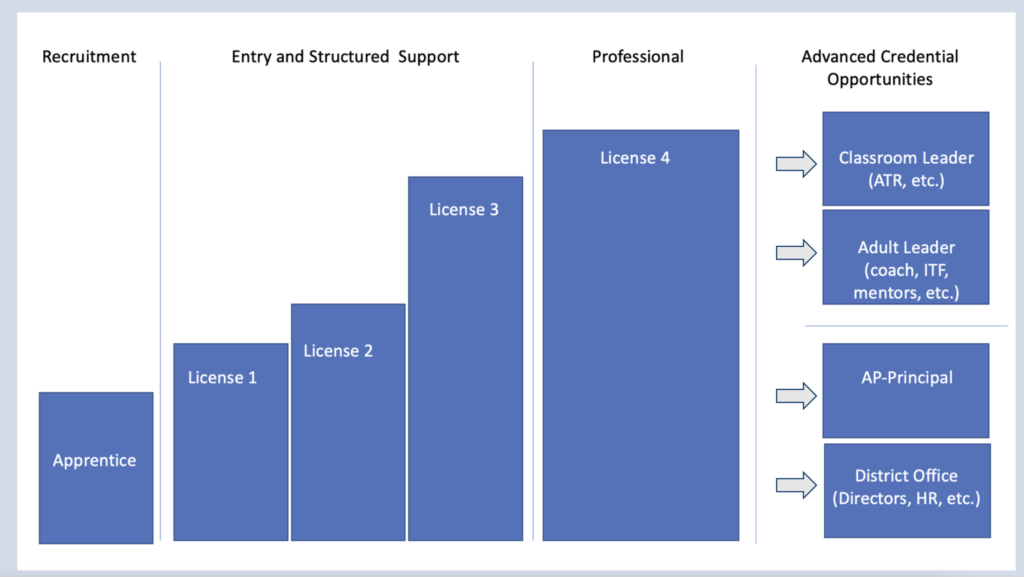
During Friday’s subcommittee meeting, members had a chance to start responding to the feedback collected by Pittman, as well as some of the feedback sent in from the North Carolina Association of Colleges for Teacher Education, which you can read here. They also considered whether to move to the new infographic displayed above when communicating the new plan.
Members also began addressing questions from teachers related to their specific subcommittee, which you can see below.
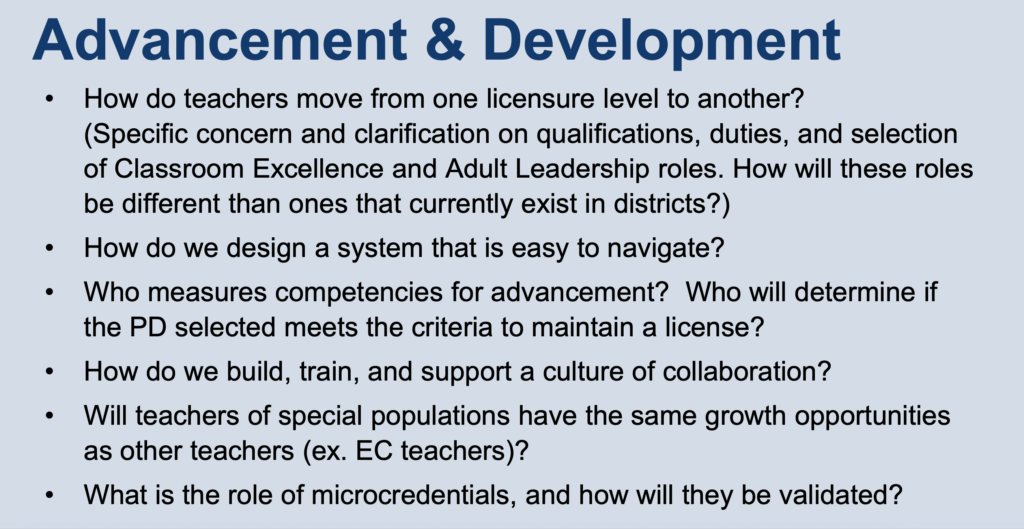
After a breakout session Friday, Patricia Bricker, associate dean for academic affairs at Western Carolina University’s College of Education and Allied Professions, said that the members in her breakout session were in favor of the new infographic. She also suggested simplifying the groups in the infographic.
“I think in the effort of trying to make this doable and simplified I would suggest that we consider the possibility of combining license one and two into one level,” she said.
That feedback is going to be sent to the licensure subcommittee for consideration.
Michael Maher, co-chair of the full commission and executive director of the Office of Learning Recovery and Acceleration at the state Department of Public Instruction, reported out from his breakout session with his group’s recommendations. Those included that people responsible for evaluating teachers under the new system would need to be independently validated before they could begin their work.
There was some discussion of removing the part of the new infographic that included a move to administration or the central office as possible pathways for teachers, with Pittman suggesting they take them off and Bricker saying she thought they were helpful.
Geoff Coltrane, education adviser to Gov. Roy Cooper, said he liked that the infographic separated the advanced credential opportunities from the rest of the licensure graphic. He said that it helped clarify that while the advanced credential opportunities were potential options of advancement, they were not required or necessary steps for teachers who have license four under the new system.
Ultimately, the subcommittee decided to take the new infographic to the subcommittee working on communications for further refinement. The subcommittee then went on to talk about the core competencies related to the various licensure levels.

Bricker came out of that session saying that the current licensure system has some good components that subcommittee members don’t want to get rid of. Rather, they want to find effective components to add on.
She said one thing that could be done with the new model is giving license levels one and two the option of affiliating with an educator preparation program (EPP) and doing a residency program — a program that currently helps usher professionals from other careers into teaching. She also said that the licensure model needs to be more explicit about the role of EPPs with license three. Specifically, she said that one of the requirements to enter directly into that license could be EPP completion.
One breakout session group talked about what kinds of EVAAS scores would be needed to meet “competency.” Maher said it is important to clarify that the expectation is to meet growth to be considered an effective teacher, not to exceed growth.
You can hear the entire discussion here. Audio cuts out during breakout sessions, but groups report out after the full group rejoins together.
Currently, subcommittees are supposed to finish up their work and then present a plan to the full PEPSC commission, which will then discuss and possibly sign off by September before turning the new system over to the State Board of Education in October and November for further discussion. If the State Board signs off on the plan in November, then legislative action will be necessary to make it happen.
In addition to policy changes, hitting the salary marks in the plan will require substantial financial investment by lawmakers. If the State Board is good with the plan, lawmakers would likely consider any needed steps during the long session in spring 2023.


